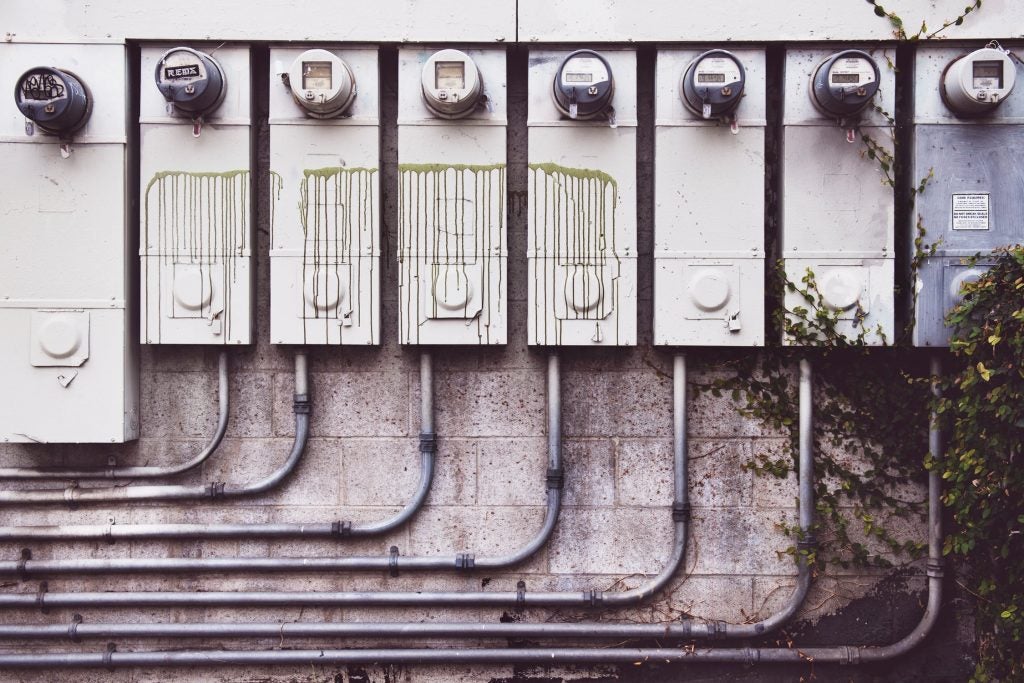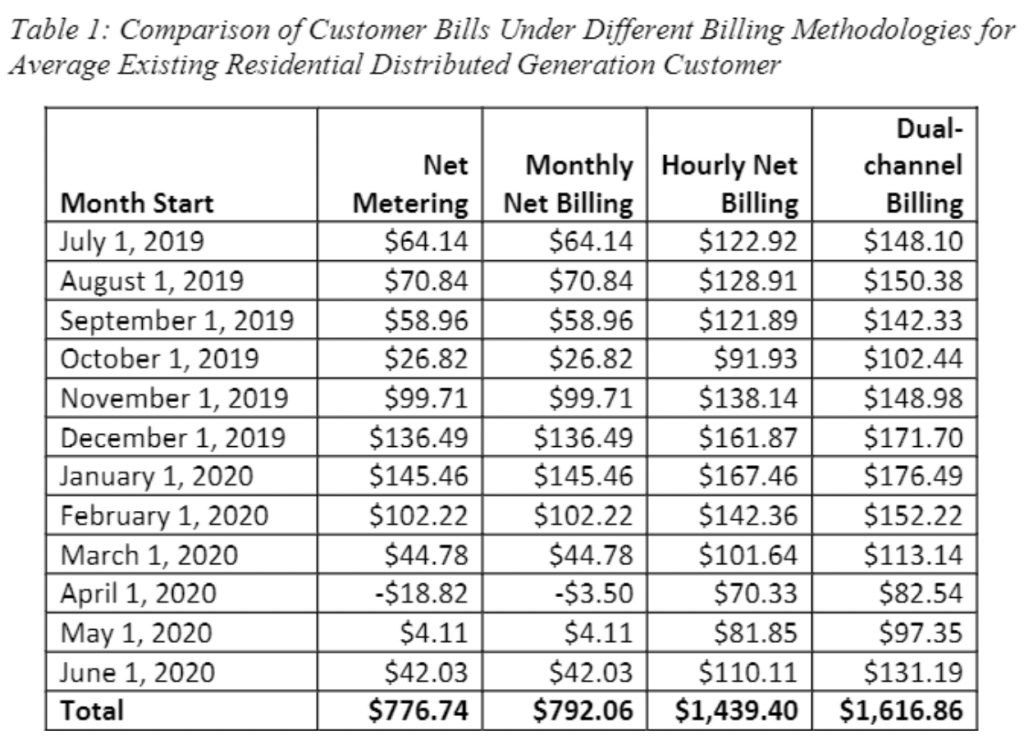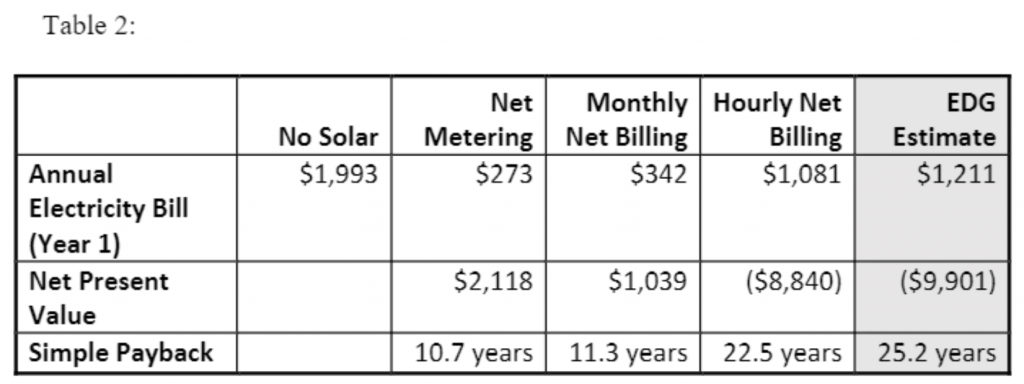The state of net metering in Indiana

In April the Indiana Utility Regulatory Commission (IURC) delivered a blow to Hoosiers’ ability to go solar.
The IURC is the agency that oversees Indiana’s investor-owned (IOU) electric utilities. It issued an order that allows monopoly utility CenterPoint Energy (formerly Vectren) to take away the fair credit new solar customers earn for energy they generate and send to the electric grid. Critically, the order will also change the period of measurement for solar generation compared to energy usage (often called “netting”). This means more of the customer-owned solar generation is credited at the new lower rate.
The decision could extend the typical payback for solar in CenterPoint territory from 10 years today to more than 25. CenterPoint Energy serves more than 140,000 electric customers in Southwest Indiana. Solar across the state will feel its effects unless Indiana’s legislature changes state law.
The order is a disappointing setback for Indiana’s solar movement. The new rules would render rooftop solar unattainable for too many customers. Fewer homes and businesses investing in solar means that everyone loses out on customer-owned solar’s positive social benefits. This decision shows the IURC is more interested in protecting CenterPoint’s monopoly profits than in standing up for Hoosiers by supporting rooftop solar.
But there is still a path forward to a clean, just, and equitable energy system with rooftop solar as the cornerstone. To get there, we need to understand where we’ve been. We also need to make our demands clear to the Indiana’s elected officials. They have the power to enable pro-solar policies before it’s too late.
How we got here
The IURC’s order impacts a program called “net metering.” Net metering is a fair and simple way to credit solar owners for the electricity they generate. It provides a bill credit to solar owners for the solar energy they produce, but don’t use themselves, at the same rate that all consumers pay utilities for energy used from the grid — an even swap.
The fair credit provided through net metering is the economic foundation of the customer-owned solar market in Indiana and other states around the country. But over the past decade, it has become the focus of hostile and misleading attacks from the utility industry.
These attacks led Indiana’s legislature to pass a law, SEA 309, in 2017. SEA 309 ends net metering programs for new solar customers no later than July 1, 2022. It applies to all of Indiana’s investor-owned utilities (IOUs). IOUs serve more than 80% of Indiana’s electric customers. The law allows utilities to end net metering programs sooner if the total amount of net-metered capacity from sources like rooftop solar reaches 1.5% of the utility’s peak load. This is why CenterPoint filed to end net metering sooner than Indiana’s other IOUs.
SEA 309 replaces net metering with a bad deal for solar owners. It establishes a new, lower rate for the energy solar owners generate, but don’t use themselves. The new rate is called “excess distributed generation” (EDG). It is based on the average marginal price of electricity paid by the utility during the most recent calendar year, plus 25%. In the CenterPoint case, this means lowering the value solar owners earn from electricity they send back to the grid from the current retail rate of more than 15 cents per kilowatt-hour (kWh) to just 2.772 cents per kWh.
What about the other utilities?
On March 1 of this year, Indiana’s other investor-owned utilities — NIPSCO, I&M, AES Indiana (formerly IPL), and Duke Energy Indiana — all filed petitions to end net metering for future solar owners in their service areas. Unfortunately, each company is following the harmful precedent set by the IURC in the Centerpoint order. SUN has filed to intervene in each case, along with Citizens Action Coalition and Indiana Distributed Energy Alliance. We will be engaged in the regulatory process over the coming months. We will keep solar supporters updated as the filings advance through the regulatory process, including proposed program details and ways for you to take action.
Important implications from the IURC’s order
As the first utility to end net metering for new solar customers, the IURC’s order in the CenterPoint case (Cause No. 45378) has some potentially precedent-setting implications.
It is a one-two punch to solar owners. It lowers what credit solar owners earn from the electricity they generate. And it lets utilities account for a higher percentage of this generation at the lower rate.
As we noted earlier, the IURC approved the new lower rate for energy sent to the grid by solar-owners. We expected this due to the language of the law. But, it’s still noteworthy because it creates a low and arbitrarily set value for electricity. This electricity was valued at the full retail rate with net metering. The new low rate explicitly ignores the many benefits that come from rooftop solar. These benefits include reduced overall system costs, a cleaner and healthier energy mix, and good-paying local careers in a growing industry.
The Commission also approved CenterPoint’s proposal for what the utility calls “instantaneous netting.” The current netting interval is one month. To understand why this is harmful to solar owners, it’s helpful to think about when solar energy is generated, and when customers use electricity.
A typical solar system will produce more electricity than a homeowner uses during the day and less than they use at night. During the summer months, customers may find that for the entire month their systems generated more electricity than the customer consumed. Under Indiana’s current net metering system, the utility credits this small amount of excess at the retail rate—an even swap. But, with “instantaneous netting,” all excess electricity is credited at the new, lower EDG rate.
The measurements of electricity sent to the grid and that of electricity delivered from the grid are kept on separate registers. In this arrangement, there is no real “netting” as required by Indiana law—or as implied by the utilities framing of this dual channel net billing arrangement as “instantaneous netting.” Instead, each monthly bill would include charges for the “inflow” register, multiplying the tracked electricity purchased from the grid at the full retail rate, and credits for the “outflow” register, multiplying the tracked electricity sent to the grid at the lower EDG rate.
In joint testimony filed with the IURC, Vote Solar’s Will Kenworthy demonstrated that “instantaneous netting” leads to drastically different outcomes for solar owners in both annual electric bills and estimated payback on a solar investment. Kenworthy’s estimates show that for an average new solar owner in CenterPoint territory, the IURC’s order would more than double their annual electric bill — an increase of nearly $800 per year. This would make going solar financially unrealistic for too many Hoosier families.


It’s not an exaggeration to say that fully implementing the Commission’s order will likely have dire consequences for the customer-owned solar market in CenterPoint’s service area. If Indiana’s four other IOUs follow CenterPoint’s lead, it could be devastating for future solar owners around the state.
What comes next?
Solar owners deserve fair value for the electricity they generate. Rooftop solar benefits all customers by harvesting sunshine to produce clean electricity close to where it’s used. We can’t let the IURC’s disappointing decision keep us from fighting for our solar rights
SUN is joining Citizens Action Coalition, Environmental Law & Policy Center, Vote Solar, Indiana Distributed Energy Alliance, Solarize Indiana, and the Indiana Office of the Utility Consumer Counselor in appealing the order to the Indiana Court of Appeals. The appeals process will run its course over the coming months.
While the order was delivered by the IURC, the real roadblock to a pro-solar future is the Indiana General Assembly. Legislators must act to undo the harms of SEA 309. Indiana’s solar movement must rise to the occasion so that our demands for fair and just solar policies can no longer be ignored.
Call on your legislators to keep Indiana’s solar future bright, and stay tuned for more ways to fight for your solar rights in the coming months.
